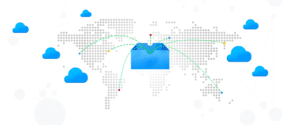The COVID-19 pandemic has put a strain on retailers’ digital capabilities as customers shift from in-store to online purchases. We’ve been working with retailers to support their business operations during this time, and have highlighted the importance of investing in digital channels, particularly by modernizing ecommerce platforms in Google Cloud.
E-commerce modernization is a complex undertaking, part of a long-term goal consisting of various phases. As a retailer, however, you can take some initial first steps right now to build the foundation for a flexible and agile e-commerce platform that caters to your customer’s expectations.
In our blog post we’ll go over one of these first steps, e-commerce migration. We’ll discuss what ecommerce migration consists of, what problems it addresses, and go over some tactical recommendations on how to get started, including using our ecommerce migration Retail Solution.
What is e-commerce migration?
E-commerce migration entails taking your current e-commerce platform and moving it to the cloud a so-called “lift and shift”. Retailers with virtualized or containerized ecommerce workloads seek quick cloud integration, often as the first step in a broader ecommerce transformation effort.
Even if it’s just as a first step, retailers who embark on an e-commerce migration initiative can take advantage of Google Cloud’s elasticity, scalability, security, and best-in-class cloud platform. Here are a few of the benefits:
-
- Migration capabilities: Google Cloud Live Migration eliminates maintenance downtime for compute instances, while Migrate for Compute Engine simplifies ecommerce migrations. Migration Center, with Google Cloud Certified Professionals at PawaIT, accelerates complex workloads.
-
- Flexible Compute: Google Cloud offers a wide range of Compute Engine machine type options to better right size compute to the retailer’s ecommerce workloads and help reduce cost Compute Engine.
-
- Security: Google Cloud encrypts all data in transit and at rest by default, helping support retailers’ compliance requirements, including Payment Cardholder Industry (PCI), and secure their end consumer data.
-
- Network: Google Cloud’s load balancer distributes traffic across multiple geographic areas, improving experience, conversion, availability, and disaster recovery for regional failures.
-
- AI & Data Analytics: Google Cloud migration enhances customer experience with AI-driven recommendations and search results.
As a result, retailers can increase their organization’s agility and innovation capability and more quickly launch new experiences to keep up with changing consumer expectations. In addition to these benefits, ecommerce migration addresses many challenges retailers face, and are top of mind at the executive level, including:
-
- Velocity: Lack of agility to support ongoing business via digital channels and adapt to heightened and more sophisticated customer expectations.
-
- Total cost of ownership: High operational costs due to upfront investment in on-premise infrastructure and capacity to accommodate peak loads, and the need to implement cost reduction procedures to focus solely on mission-critical workloads.
-
- Business shift: The shift from in-store to online creates strain on omni-channel capabilities including logistics and supply chain.
-
- Legacy systems: Constraints with existing legacy ecommerce infrastructure (pushing the limits of both the software and hardware) hinder the ability to modernize and adapt to changing customer demands.
A move to Google Cloud via an e-commerce migration addresses these pain points in the following ways:
-
- Help your business accommodate any traffic pattern set by your customers with Google Cloud’s scalability and elasticity capabilities. You can also safeguard your own cloud resources by leveraging Compute Engine Reservations, which come in handy during peak events such as promo days, Black Friday, Cyber Monday, and other times when you need guaranteed cloud resources.
-
- Help your business prevent downtime and loss of business
-
- Help your business minimize cost by scaling down unused capacity. You can also bring down costs even more by leveraging Compute Engine Sustained Use Discounts and Committed Use Discounts for your predictable workloads.
-
- Accelerate the speed and performance of your ecommerce channel. By having access to Google Cloud’s countless regions around the globe, you can serve requests closer to customers by leveraging Google Cloud’s networking backbone.
How do I get started?
The reality is that any e-commerce migration project can be complex, but you can reduce that complexity by following a tried and tested approach. Based on our experience working with various retailers, the Google Cloud Professional Services team has developed a methodology to help with this journey.
This is a common migration path which follows a methodology based on best practices we’ve seen from the field:
-
- Proof of concept: Get comfortable with Google Cloud by experimenting with our products and services. Test out a subset of future-state ecommerce functionality in a risk-free sandbox environment to gain confidence in the migration.
-
- Cloud Foundations: Define and build out the minimal set of Google Cloud foundational components required by the migration across domains such as Identity and Access Management, Resource Management, Networking, Cloud Monitoring & Logging, and Cost Control.
-
- Discovery and planning: Perform ecommerce application inventory to understand the overall complexity of your migration. Plan for the subsequent stages of the migration.
-
- Execution: Migrate your ecommerce workload without serving customer traffic. Validate your deployment by performing integration and smoke testing.
-
- Testing: Validate functionality and start serving minimal traffic. A good rule of thumb is to start by splitting traffic between the legacy and the new solution for example, you could serve ~1% of traffic from the new solution and increase volume progressively.
-
- Optimization: Tweak telemetry and instrumentation iteratively in Cloud Monitoring based on SRE best practices. Tweak monitoring metrics based on KPIs used to track SLI(Service Level Indicators) and SLOs(Service Level Objectives).
-
- Decommissioning: Phase out and decommission your legacy ecommerce solution once you achieve a desired level of comfort.
The approach above might look daunting, but by following it with the right methodology and organizational mindset you can execute a successful migration and lay the groundwork for a flexible and agile ecommerce foundation.
Sample decision tree for modernization
Additional Resources








